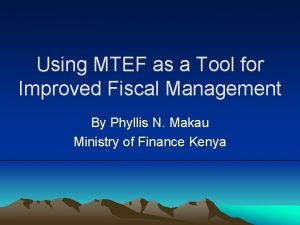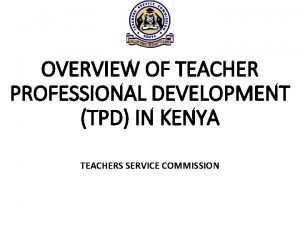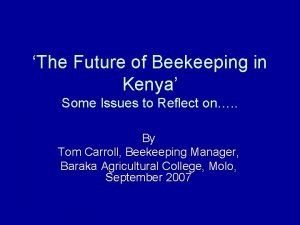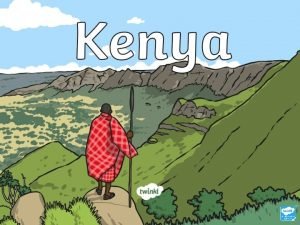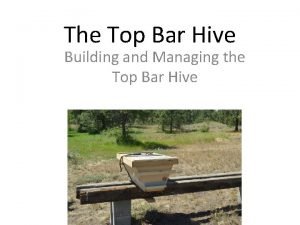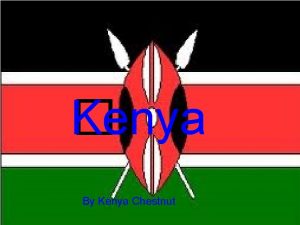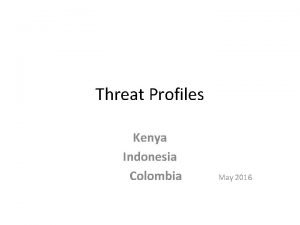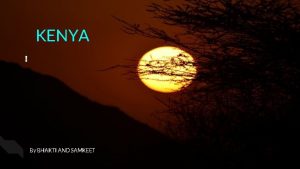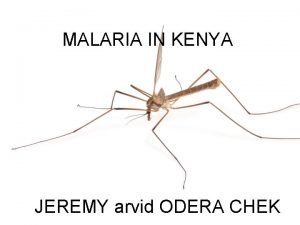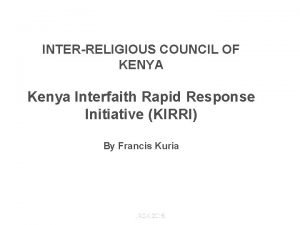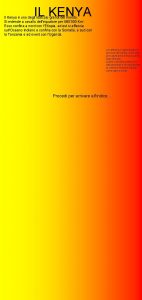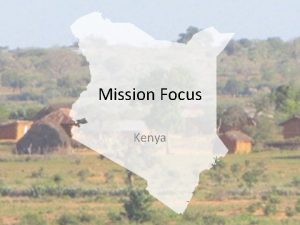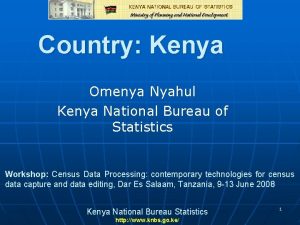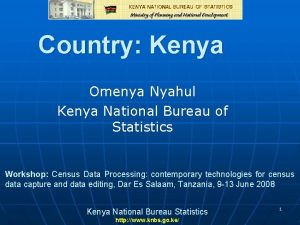Wasps Wasps 9 common families in Kenya Siricidae

























- Slides: 25

Wasps!

Wasps: 9 common families in Kenya Siricidae Vespidae Sphecidae Crabronidae Ampulicidae Pompilidae Mutillidae Ichneumonidae Braconidae She Very Sophisticatedly Carries A Purple Megaphone In Business

Siricidae: horntails or wood wasp • Strong, projecting spike on last tergite of abdomen, hence its name • Long posteriorly projecting ovipositor • Typically brown/blue/black with yellow parts • Can be up to 5 cm long

Siricidae: horntails or wood wasp tail ovipositor

Vespidae: yellow jackets, hornets, paper wasps etc • At rest, fore wings fold in half longitudinally • First discoidal cell of forewing greater than half the wing length • Inner margin of eye usually notched • Pronotum extend back to the tegulae, appearing V-shaped in lateral view and horseshoe-shaped from above

Vespidae

Vespidae: V (lateral) or horseshoe (dorsal)shaped pronotum extend to tegulae

Sphecidae: thread-waisted wasps • Abdomen long and stalked, giving the body a "threadwaisted" appearance • Middle tibiae with two apical spurs • Black (sometimes tinged with metallic blue or green), black and red, yellow and black, or white and black • 10 -30 mm

Sphecidae

Crabronidae: recently separated from sphecidae • Identifying features still in the works • At distinguishing features available at subfamily/tribe level and most authorities propose reclassifying these as families

Ampulicidae: cockroach wasps • Tend to have elongated jaws • Pronounced neck-like constrictions behind the head • Deep grooves on the thorax • Many are ant-like in appearance, though some are brilliant metallic blue or green.

Ampulicidae “Neck”

Pompilidae: spider wasps • Dark colored with smoky/yellowish wings (few bright color) • Slender with long and spiny legs, hind femora typically extend beyond tip of abdomen. • Two prominent spines on hind leg tibiae • Short 1 st discoidal cell in forewing • Like the Vespidae, the pronotum extend back to the tegulae

Pompilidae

Mutillidae: velvet ants • ♀s lack wings, ♂s are winged • Coarse setae (hair) that cover most of their body, making them resemble hairy ants • ‘hair’ usually bright scarlet or orange, may be black/white/silver/gold • Do not have ‘elbow’ antennae and no ‘hump’ on the waist • Tough exoskeleton

Mutillidae: velvet ants

Ichneumonidae • Slender; vary in size and color • Antennae with ≥ 16 segments and usually at least half as long as body. • Many are uniformly colored, from yellowish to black; others brightly patterned with black and brown or black and yellow • Many have middle segments of antennae yellowish or whitish. • Many have long ovipositors, often longer than the body. • Slender, wasplike. Two recurrent veins • Forewing venation form "horse head" shape

Ichneumonidae Antennae at least ½ body length “Horse head”

Ovipositor Light middle antennae segment

Braconidae • Antennae ≥ 16 segments • Hind trochanters 2 -segmented • Female ovipositor length varies widely, from very long to short • Often black-brown (sometimes with reddish markings), though some species exhibit striking coloration and patterns

Braconidae

Tonight, we need to try the (UV) light+pan traps!

Friday!

Plan #1 • Set up experiments to test if NTOs can assess contents of ATSBs: malaise + rearing chamber/cage with ATSB?

Plan #2 • Sort samples collected from recently completed field collections into insect orders • For each collection method, calculate the relative abundance of each identified insect order – group results by location • If you’re feeling ambitious, perform statistical analysis to determine any differences in R/A of insect orders between methods and locations
 When the wasps drowned essay
When the wasps drowned essay Big families vs small families
Big families vs small families Common factors of 36 and 48
Common factors of 36 and 48 Greatest common factor and least common multiple
Greatest common factor and least common multiple Common anode and common cathode
Common anode and common cathode Highest common factors and lowest common multiples
Highest common factors and lowest common multiples Factor tree for 56
Factor tree for 56 Lowest common factor
Lowest common factor Mtef kenya
Mtef kenya Teacher professional development in kenya
Teacher professional development in kenya How do the governments of kenya and nigeria compare?
How do the governments of kenya and nigeria compare? Kavi kenya
Kavi kenya Digitize police abstract
Digitize police abstract Commercial beekeeping in kenya
Commercial beekeeping in kenya Ledc kenya
Ledc kenya Labour institutions act
Labour institutions act Private safaris kenya
Private safaris kenya Universal periodic review kenya
Universal periodic review kenya Where is kenya located?
Where is kenya located? Kenya climate innovation center
Kenya climate innovation center Procurement
Procurement Isaca kenya
Isaca kenya Lsk sacco loans
Lsk sacco loans Literacy rate kenya
Literacy rate kenya Language of kenya
Language of kenya Define a kenya top bar hive
Define a kenya top bar hive








